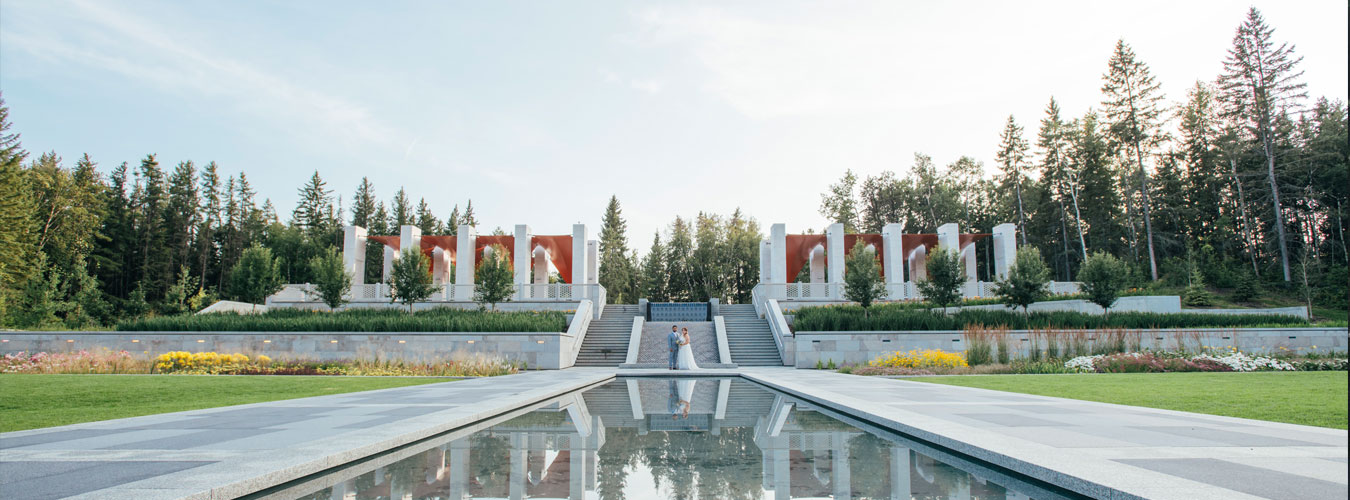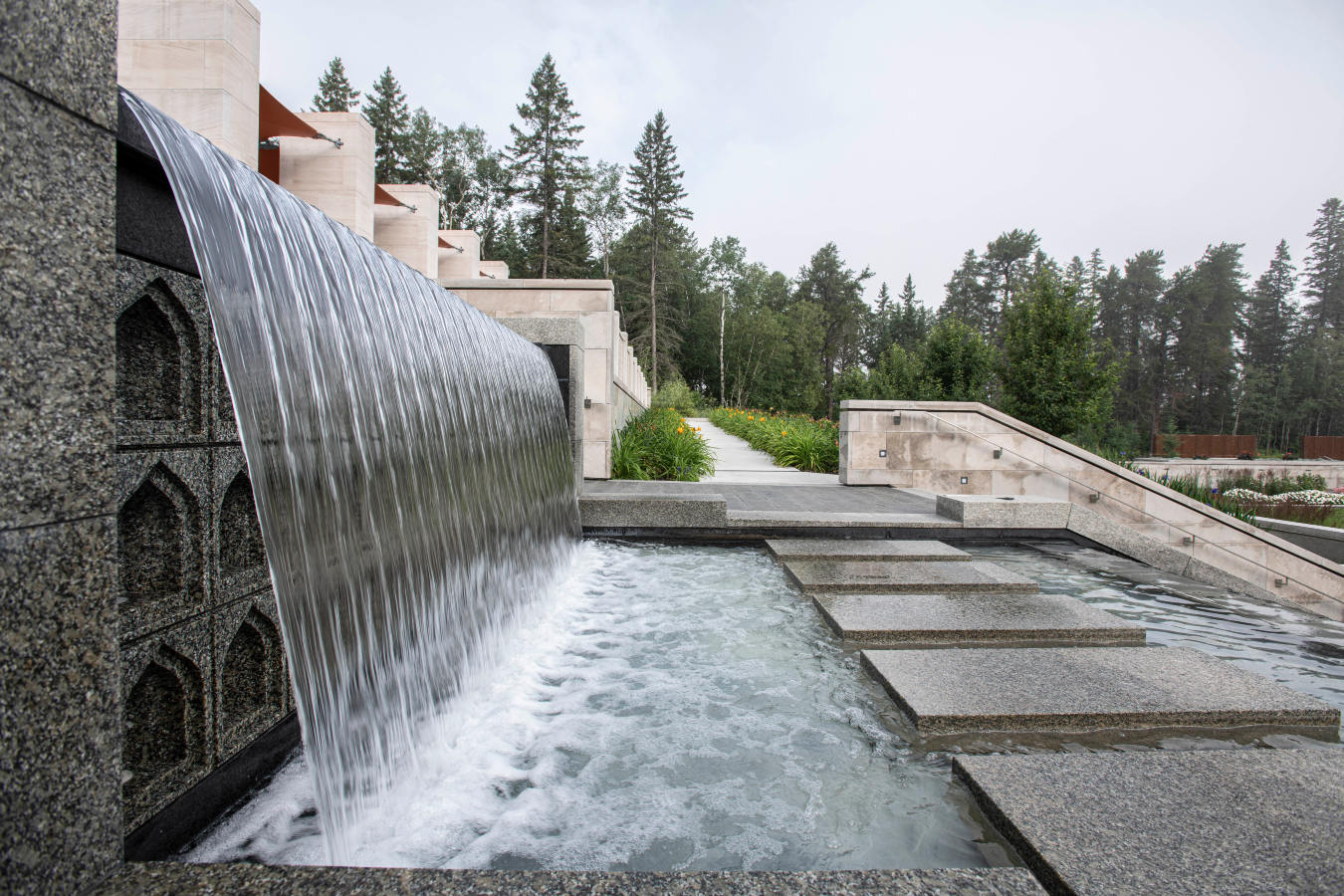
- Programs & Services
- Learning & Development
- Health & Wellness
- Faith & Traditions
- Economic & Financial Planning
- Community Engagement
- Support Services
- News
- Upcoming Events
- Watch Now
- Opportunities
- the.ismaili
- Feedback
- Login

The Aga Khan Garden, Alberta is the latest masterpiece of the Aga Khan Trust for Culture’s diverse portfolio of 11 parks and gardens across the world. The 11-acre oasis sits within the University of Alberta Botanic Garden, 15 minutes southwest of Edmonton. Symbols of Alberta and its natural beauty permeate the Mughal-inspired design. At opposite corners of the garden’s chahar bagh (an Islamic quadrilateral designed garden), a striking fountain in the shape of the five-petal Alberta wild rose sits across a small winter-inspired garden highlighting the geometry of a six-pointed snow crystal. This unique design has garnered national attention: the Canadian Society of Landscape Architects recently recognized the Garden with a 2020 Award of Excellence.
Exploring the garden, one will discover 12 water features creating humid microclimates to nurture the surrounding 25,000 annuals, perennials, shrubs, trees and wetland plants—each thoughtfully selected for aesthetics, fragrance and the ability to thrive in Alberta’s northern climate. While unique in design, each section shares a commonality: the presence of water. As His Highness the Aga Khan eloquently stated at the inauguration of the garden in October 2018: “The garden of Islamic tradition is also a place where the flow of refreshing water reminds us of divine blessing.”

Designed by Nelson Byrd Woltz, a world-renowned landscape architectural firm, the garden is based on traditional Mughal landscaping. It is divided into three separate components: the Woodland Bagh (garden), the formal chahar bagh (four gardens) and the bustan (orchid). “These three gardens engage together to represent a 21st century interpretation of the historic Islamic garden for the Albertan landscape,” says principal designer Thomas Woltz.
The Woodland Bagh features a black granite pool reflecting the blue prairie skies and the Talar, meaning “throne” in Persian, which is composed of a grand limestone terrace with tall towers and a waterfall. The centre of the garden incorporates a chahar bagh composed of a series of still pools surrounded by quadrilateral pathways leading to other formal gardens. The chahar bagh borders a natural pond and the bustan of young fruit trees. The juxtaposition of the slightly rugged, natural wetland with the exotic sophisticated details is breath-taking.
“It symbolizes not only the creative blending of the natural and the human—but also the beauty of multiple inter-cultural cooperation,” explained his Highness the Aga Khan at the inauguration. “One of the great questions facing humanity today is how we can honour what is distinctive about our separate identities and, at the same time, welcome a diversity of identities as positive elements in our lives.”

In addition to showcasing diversity in its design, the Aga Khan Garden, Alberta is a centre for research and learning that hosts educational programmes, exhibitions, performances, recitals, film screenings and cultural events. In doing so, the garden unites diverse people together. “It is the place where people who speak different languages help each other up the wheelchair ramp. Or where those with hijabs and those with cowboy hats share an ice cream cone,” reflects Dr. Lee Foote, Director of the University of Alberta Botanic Garden.
While linking the past to the present, the garden demonstrates how nature connects humanity. As His Highness remarked, “[E]ven as we share the garden experience with one another, we can feel a connection with those who walked through similar gardens in the past.”

This article originally appeared in the Summer 2020 issue of The Ismaili Canada.